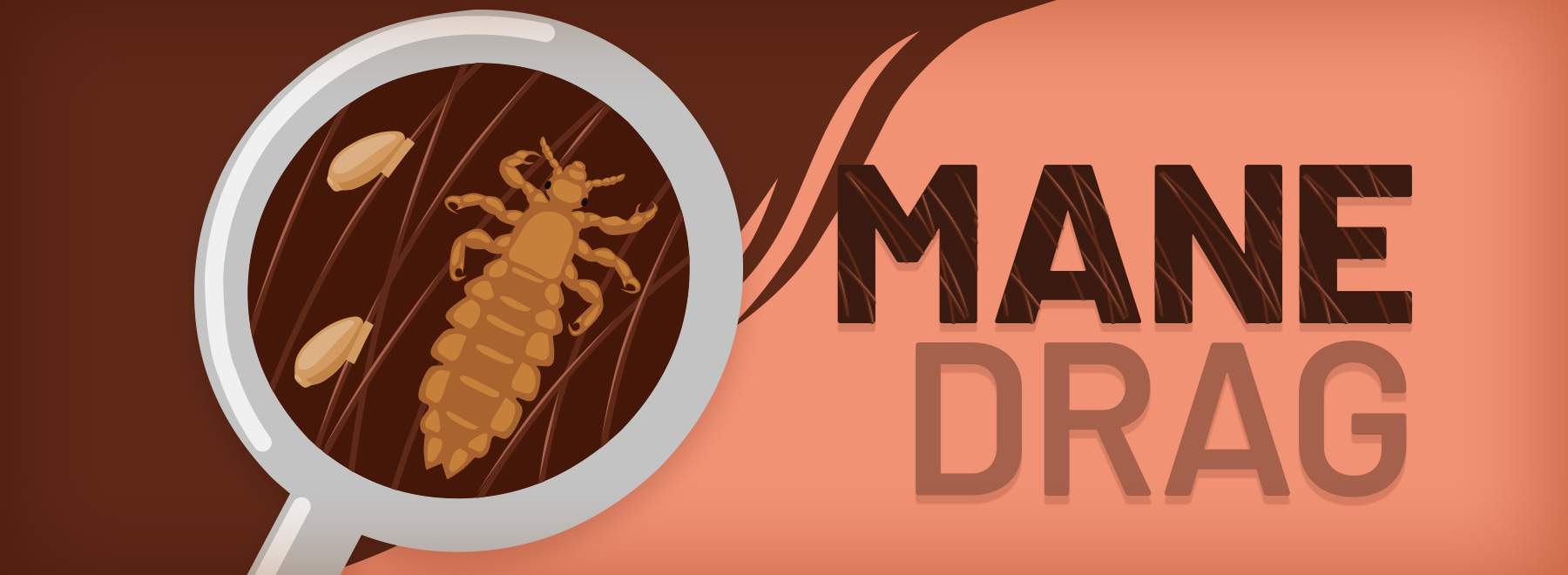Don’t let head lice haunt your winter
It’s the season of freezing temperatures and, perhaps, little bits of white stuff sticking to your hair.
Nits.
Head lice — small, wingless insects (order: Anoplura), whose favorite beverage is human blood — prefer warm temperatures, but they also like it when people get together and share personal items and space, making it easier for them to drop their eggs, or nits, on your scalp like presents under a tree.
And what better place or time to do than now when people tend to clump together for warmth, or a at a sleepover or in a classroom full of kids?

“I would think that the number of cases could go up during the winter because of the way the lice are spread – especially by children, who like to share things,” said Dr. Elizabeth M. Sims, assistant professor of pediatrics at the University of Mississippi Medical Center.
Each year in the United States, an estimated six million to 12 million outbreaks plague children ages three to 11, although adults are not spared either.

Still, compared to grownups, youngsters are more prone to getting head lice, said Dr. Morgan McLeod, assistant professor of medicine-medicine/pediatrics at UMMC.
“Lice don’t jump; they don’t fly,” McLeod said. “Direct contact is the most reliable way to spread lice. Typically, we see it in the younger kids, who are often hugging each other; there’s more contact between them.”
It’s bad enough that these six-legged spongers have the appetite of a vampire; on top of that, the females, apparently armed with tiny, anatomical glue guns, attach their eggs to your hair. It takes eight to 10 days for these nits to hatch. In about two weeks, they are full-grown lice.
If not removed, they can ignite another verminous swarm.
“The tricky thing is, if it’s the first time you’ve been exposed to lice, it may take a few weeks before you have a reaction to it,” McLeod said. “That’s why it could be a problem and spread so easily.”
Symptoms include an itchy head, which is a reaction to the lice’s saliva, causing unusual scratching activity, along with, perhaps, red bumps on the scalp. At which time, a visual inspection is due.
The Centers for Disease Control and Prevention recommends that the inspector use a bright light and wear gloves while using the fingers to separate the hair, clearly exposing the scalp. If the lice are there, you will see what looks like a platoon of darkish poppyseeds staging maneuvers in the underbrush. Also recommended: a lice comb.
The nits will be white, grayish-white or yellowish-brown. If these diminutive, oval specks pull off easily, then you’re probably looking at dandruff. Otherwise, it’s time for louse-icide.
“First, try over-the-counter treatments, such as Nix and RID,” Sims said. Permethrin is the active ingredient in Nix, while RID’s is pyrethrin. Both are topical medications.
You also want to do wet combing, using warm water with a fine-tooth comb.
“After treatment, wait 24 hours to 48 hours before washing your hair,” McLeod said. “Lice do have a decent amount of resistance to those treatments, though.
“If you can’t get rid of them with those treatments, you may need to call your doctor, who may offer a prescription.”
That could be, for instance, Natroba (spinosad) or Sklice (ivermectin), Sims said. “Those are also topical treatments; typically, you place them on the scalp and leave on for 10 minutes. Another medication is malathion, which may be left on for eight to 12 hours.
“In addition to medication, you can do wet-combing through the hair and pick out the nits.”
Anyone who has had close contact with the lice victim should be examined — and then treated, of course, if lice are found, Sims said. “If they sleep in the same bed or bedroom, they need to be treated anyway.
“Any clothing, bedding, towels and so forth that were used for about two days before you noticed the lice should be washed in hot water and placed in the dryer. Then use a vacuum cleaner for furniture and carpets — things that can’t be washed.
“With stuffed animals, you can put them in a sealed plastic bag for two weeks and that will kill the lice.”
If there is any bright spot in finding lice on your child, it may be this: CDC guidelines say that as soon as children are treated, they can return to school.
But they should be especially wary of getting too close to their classmates and should avoid wearing or using each other’s personal items, such as hats, bike helmets, headphones and combs. This wariness should extend to sleepovers, too.
Because of lice, this is a sad truth that children have to learn, whatever the season: Sometimes, it’s not nice to share.
To make an appointment with a physician in the Department of Pediatrics at UMMC, call 1-888-815-2005 or make an appointment online by signing up for MyChart or filling out a UMMC Patient Appointment Request Form.
The above article appears in CONSULT, UMMC’s monthly e-newsletter sharing news about cutting-edge clinical and health science education advances and innovative biomedical research at the Medical Center and giving you tips and suggestions on how you and the people you love can live a healthier life. Click here and enter your email address to receive CONSULT free of charge. You may cancel at any time.



